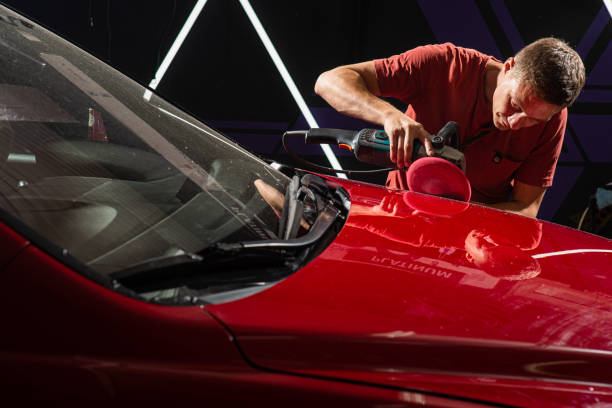Auto detailing is more than just a car wash—it’s a meticulous process designed to keep your vehicle looking pristine both inside and out. This comprehensive guide will walk you through the essentials of auto detailing in Mt Vernon NY, providing insights on techniques, tools, and best practices to maintain your vehicle in top condition.
What is Auto Detailing?
Auto detailing involves a thorough cleaning, restoration, and finishing of a vehicle to produce a high-quality appearance. Unlike regular car washes, which focus mainly on surface cleaning, detailing addresses every part of the car, including those often overlooked.
Exterior Detailing
Washing and Drying
The first step in exterior detailing is a thorough wash. This includes:
- Pre-wash: Use a high-quality pre-wash solution to loosen dirt and grime.
- Hand wash: Employ a pH-balanced car shampoo and a microfiber wash mitt to clean the car’s surface. Avoid using dish soap as it can strip away protective wax.
- Drying: Use a clean microfiber towel or a blow dryer designed for cars to avoid water spots.
Claying
Clay bar treatment removes bonded contaminants that washing alone can’t address. Run a lubricated clay bar over the car’s surface to pull out impurities embedded in the paint.
Polishing
Polishing restores the paint’s shine and removes minor scratches and swirl marks. Use a dual-action polisher and a quality polish compound. Be sure to follow up with a microfiber towel to wipe off residue.
Waxing and Sealing
Apply a wax or sealant to protect the paint and enhance its gloss. Waxing adds a layer of protection against UV rays and contaminants, while sealants provide a longer-lasting, synthetic layer of protection.
Interior Detailing
Vacuuming and Dusting
Start by vacuuming the seats, carpets, and floor mats to remove loose dirt and debris. Use specialized tools to reach tight spots and under the seats. Dust the dashboard, center console, and other surfaces with a microfiber cloth or a detailing brush.
Cleaning Upholstery
Depending on the material (leather, fabric, or vinyl), use appropriate cleaners. For leather, a dedicated leather cleaner and conditioner will keep the seats supple and free of cracks. For fabric, use a carpet and upholstery cleaner to tackle stains and dirt.
Detailing the Dashboard and Trim
Apply a plastic or vinyl protectant to the dashboard and trim to restore their original luster and prevent cracking. Use a soft brush to get into crevices and remove dust.
Engine Bay Detailing
Engine Cleaning
While not always necessary, cleaning the engine bay can improve the vehicle’s overall appearance and make it easier to spot leaks. Use a degreaser to remove grime, and rinse gently without soaking sensitive components.
Restoring Headlights
Oxidized and cloudy headlights can affect visibility and the vehicle’s appearance. Use a headlight restoration kit to sand, polish, and seal the headlights, making them clear and bright again.
FAQs
Q1: How often should I detail my car?
Ideally, you should detail your car every 3-6 months. However, the frequency depends on how often you use your vehicle and the environmental conditions it’s exposed to.
Q2: Can I detail my car myself, or should I hire a professional?
You can detail your car yourself with the right tools and techniques, but professional detailers offer expertise and equipment that can provide superior results. If you’re unsure or want a thorough job, hiring a professional is a good option.
Q3: What are the benefits of auto detailing?
Auto detailing enhances the car’s appearance, protects the paint, increases resale value, and improves overall driving experience by maintaining cleanliness and comfort.
Q4: How long does auto detailing take?
The time required for auto detailing varies depending on the vehicle’s condition and the level of service. A basic detail may take 2-4 hours, while a full detail can take 6-8 hours or more.
Q5: Is auto detailing the same as a car wash?
No, auto detailing is a more comprehensive and detailed process compared to a standard car wash. It involves thorough cleaning, restoration, and protection of both the interior and exterior of the vehicle.
Summary
By understanding and implementing these auto detailing techniques, you can keep your vehicle looking new and maintain its value over time. Whether you choose to do it yourself or seek professional help, regular detailing is an investment in your car’s longevity and aesthetic appeal.
